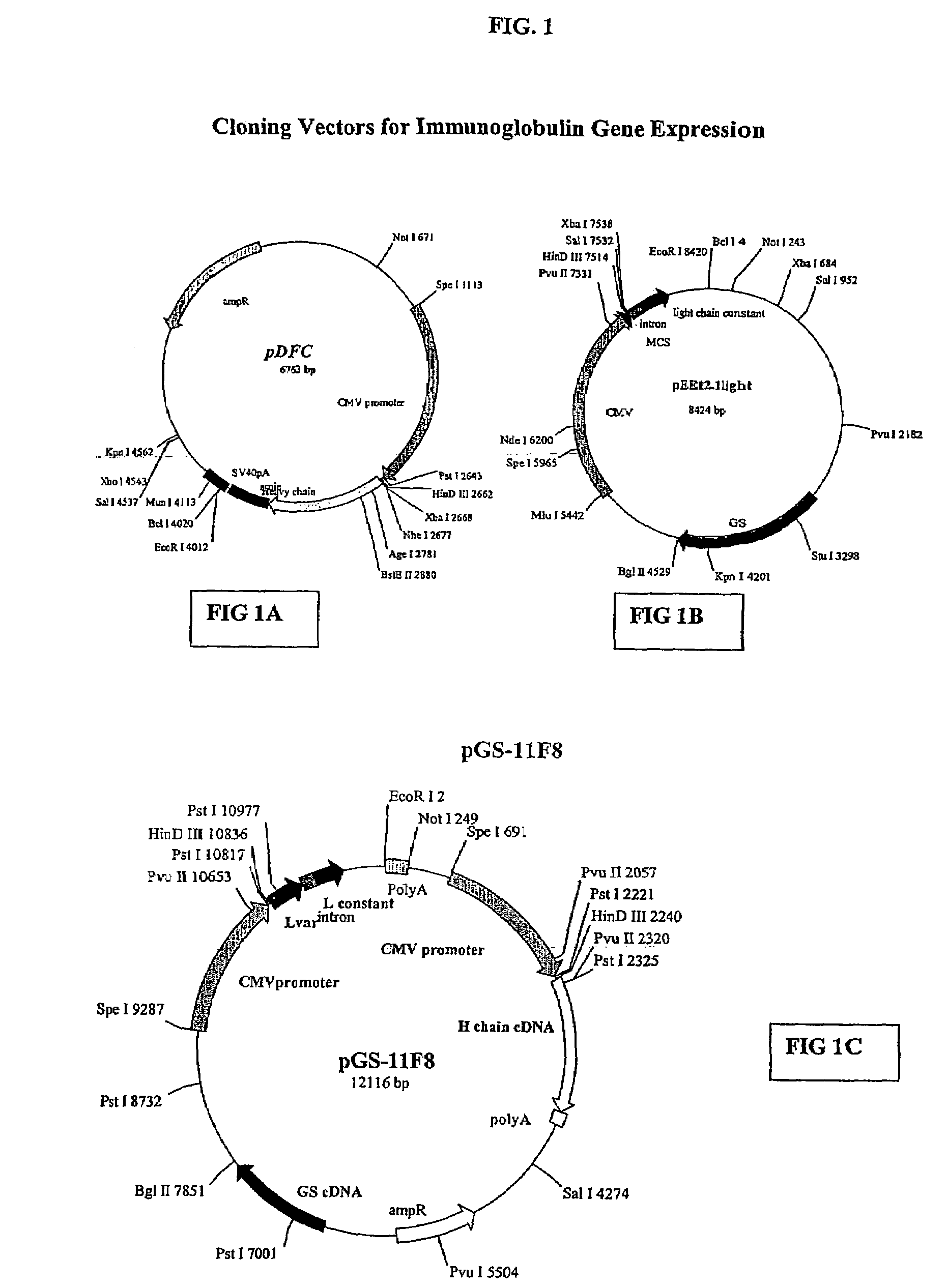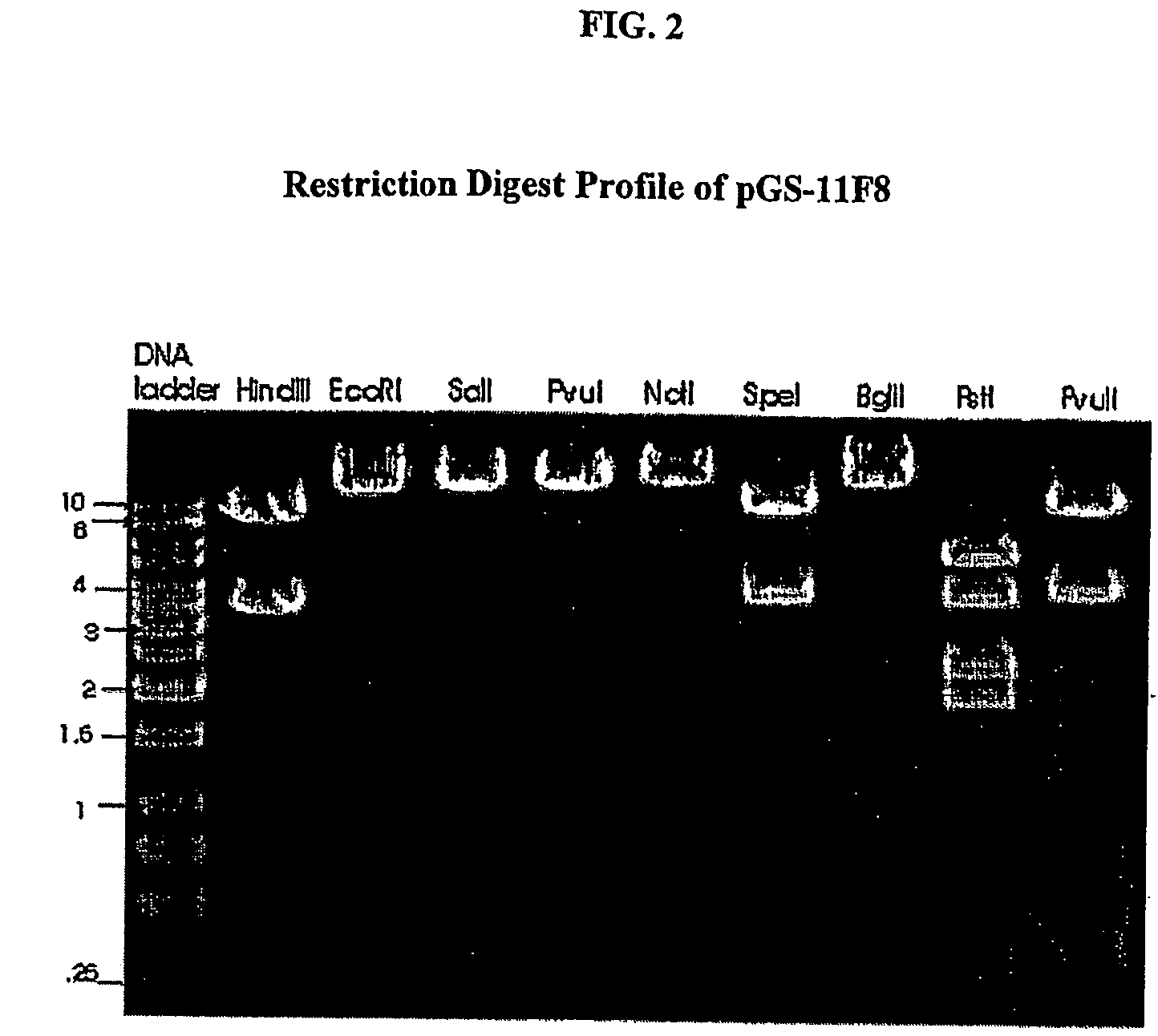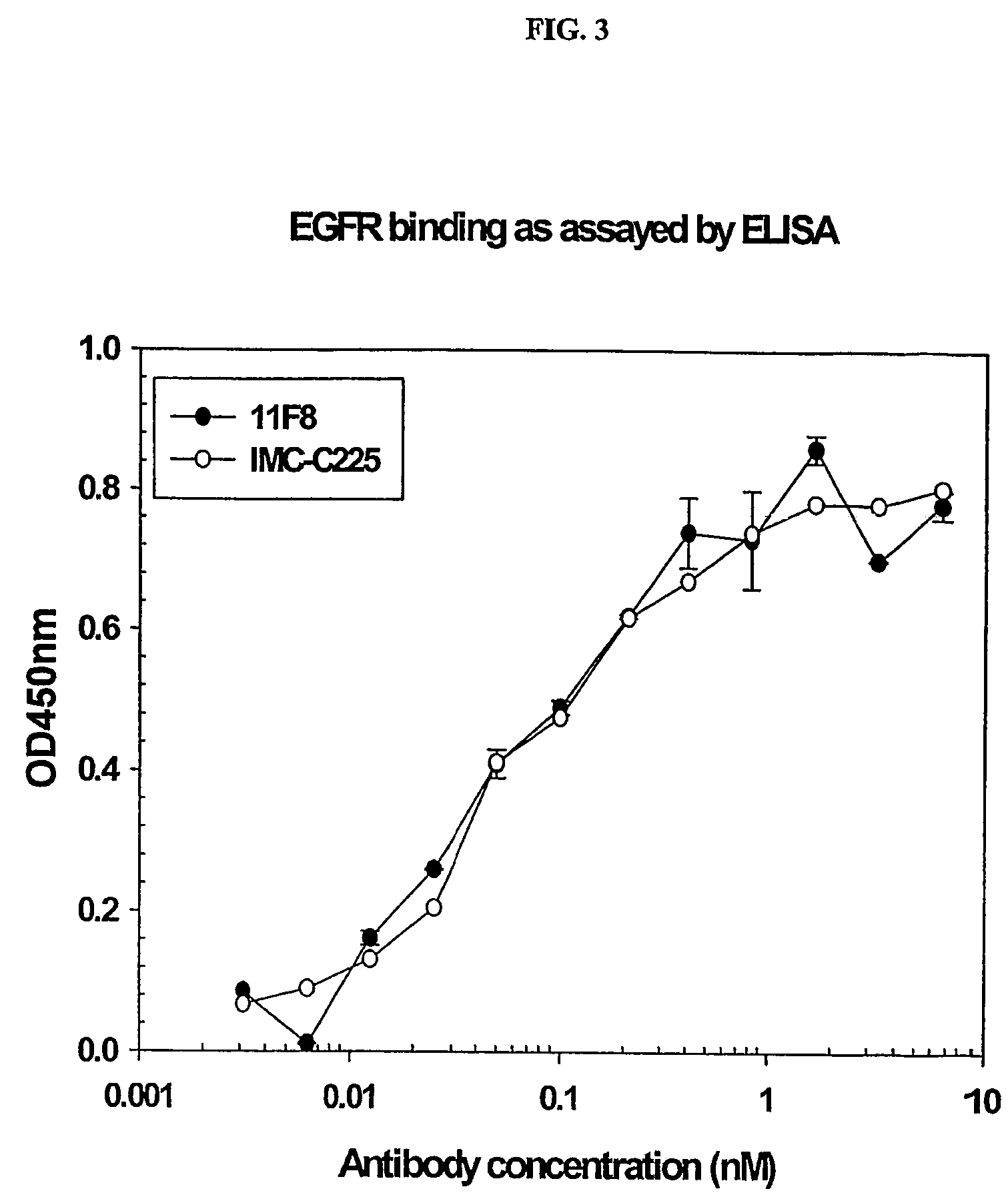Human anti-epidermal growth factor receptor antibody
a growth factor receptor and human antibody technology, applied in the field of monoclonal antibodies, can solve problems such as tumor regression, and achieve the effect of neutralizing egfr and preventing binding of ligands
- Summary
- Abstract
- Description
- Claims
- Application Information
AI Technical Summary
Benefits of technology
Problems solved by technology
Method used
Image
Examples
example 1
Isolation of Human Anti-EGFR Antibodies
[0120]Briefly, the human antibodies were isolated from a human naïve Fab bacteriophage library, obtained from Dyax, Cambridge, Mass. by biopanning against soluble human EGFR isolated from EGFR-positive tumors. The naïve Fab bacteriophage library containing the heavy and light chain variable regions of the antibody producing cells of human (peripheral B lymphocytes) was constructed from naïve uninimunized humans and tumor-free spleen cells from a patient with gastric carcinoma by amplifying in primary PCR reactions using V gene specific forward and backward primers and cloning these individual VH and VL genes into separate vectors (WO 00 / 70023).
[0121]The Fab library stock was grown to log phase, rescued with M13K07 helper phage and amplified overnight in 2YTAK medium (2YT containing 100 μg / ml of ampicillin and 50 μg / ml of kanamycin) at 30° C. The phage preparation was precipitated in 4% PEG / 0.5M NaCl, resuspended in 3% fat-free milk / PBS to block...
example 2
Expression and Purification of the Soluble Fab Fragments
[0125]Plasmids containing the genes encoding the 11F8 Fab were used to transform a nonsuppressor E. coli host HB2151. Expression of the Fab fragments in HB2151 was induced by culturing the cells in 2YTA medium containing 1 mM isopropyl-1-thio-β-D-galactopyranoside (IPTG, Sigma) at 30° C. A periplasmic extract pf the cells was prepared by resuspending the cell pellet in 25 mM Tris (pH 7.5) containing 20% (w / v). sucrose, 200 mM NaCl, 1 mM EDTA, and 1 mM PMSF, followed by incubation at 4° C. with gentle shaking for 1 h. After centrifugation, the soluble Fab protein was purified from the supernatant by affinity chromatography using a Protein G column, following the manufacturer's protocol (Amersham Pharmacia Biotech).
example 3
Construction of Human Anti-EGFR IgG1 Antibodies
[0126]The human anti-EGFR Fab was engineered into a full human IgG1. A selected Fab candidate, C11F8, was identified from a human naïve Fab phage display library for high affinity binding to, and ligand blocking activity of human EFGR (ErbB). The DNA sequences encoding the variable regions of the 11F8 Fab light (SEQ ID NO:15) and heavy chain genes were obtained (SEQ ID NO:7) by PCR amplification and cloned into an expression vector containing the human IgG1, constant domains using the glutamine synthase expression system from Lonza Biologics, Inc.
[0127]PCR amplification was performed in two steps utilizing the Expand PCR kit (Boe lringer Mannheim, Inc.) according to the manufacturer's specifications and the primers listed in Table 3.
[0128]
TABLE 3PCR Amplification PrimersSEQIDPrimerNucleotide SequenceNO:C11F8HF5′ TCCTTTTTCTAGTAGCAACTGCAACTGGAGTACATT20CACAGGTGCAGCTGCAGAA-3′C11F8HR5′-CGAGCTAGCGCTTGAGACGGTGACCAGGGTG-3′21C11F8LF5′-TCCTTTTTCT...
PUM
| Property | Measurement | Unit |
|---|---|---|
| angle | aaaaa | aaaaa |
| pH | aaaaa | aaaaa |
| time constant | aaaaa | aaaaa |
Abstract
Description
Claims
Application Information
 Login to View More
Login to View More - R&D
- Intellectual Property
- Life Sciences
- Materials
- Tech Scout
- Unparalleled Data Quality
- Higher Quality Content
- 60% Fewer Hallucinations
Browse by: Latest US Patents, China's latest patents, Technical Efficacy Thesaurus, Application Domain, Technology Topic, Popular Technical Reports.
© 2025 PatSnap. All rights reserved.Legal|Privacy policy|Modern Slavery Act Transparency Statement|Sitemap|About US| Contact US: help@patsnap.com



